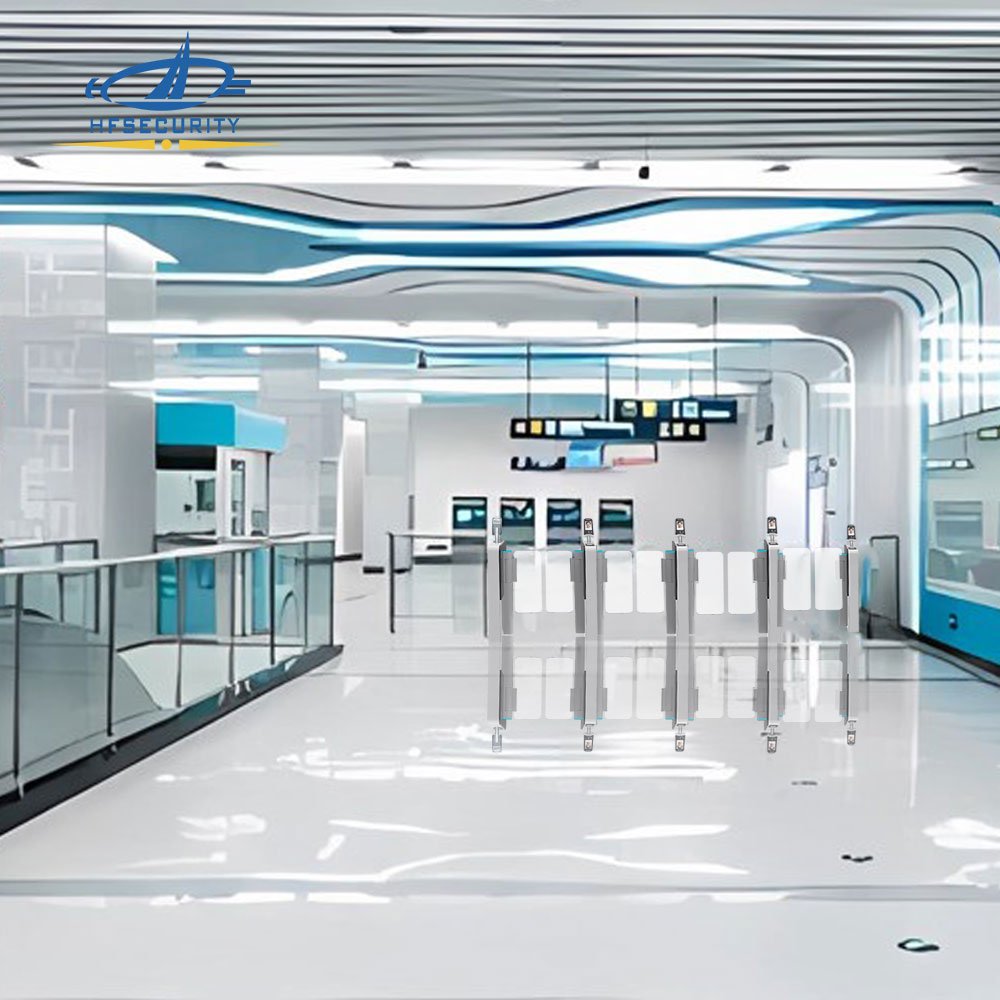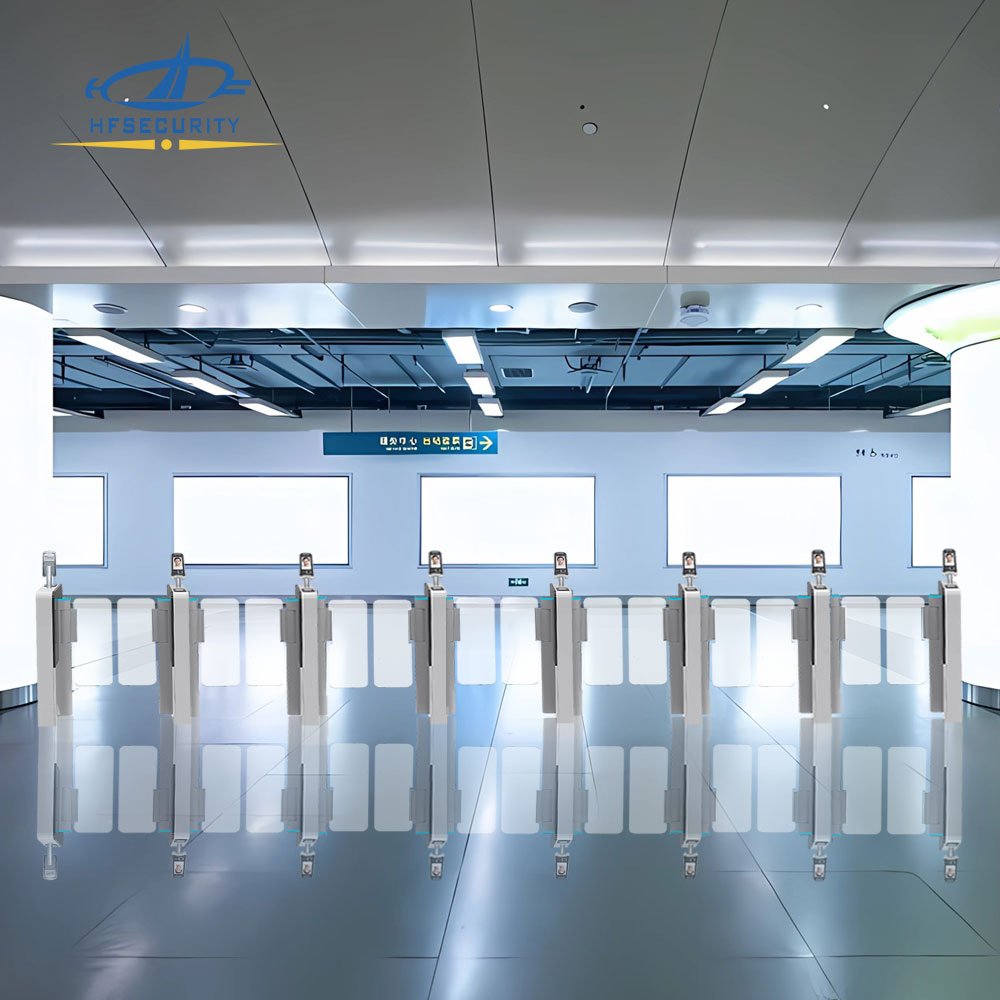In today’s world, where safety and efficiency are top priorities, sliding turnstile gates have become essential components of secure access control systems. Whether used in residential compounds, commercial complexes, industrial facilities, or government buildings, these gates offer both physical protection and smooth traffic flow. This article explores the key benefits, working principles, and application scenarios of sliding gates, helping you understand why they are a smart investment in access control.
What Are Sliding Turnstile Gates?
Sliding turnstile gates are automated access barriers that operate by sliding horizontally to allow or deny passage. Unlike traditional swing gates, they move side-to-side, making them ideal for limited space environments or high-footfall areas. They often consist of glass or metal panels that retract smoothly when access is granted.
These gates are typically integrated with access control systems, including:
Facial recognition terminals
Fingerprint scanners
Palm vein recognition
RFID card readers
QR code readers
This integration ensures that only authorized individuals gain entry, enhancing both security and operational efficiency.
How Sliding Gates Improve Safety and Traffic Flow in High-Security Zones
In high-security areas such as airports, government buildings, or research labs, managing both security and efficiency is critical. Sliding gates help streamline access by combining biometric identification with fast gate operation, reducing bottlenecks during peak hours. Their automated design also minimizes manual intervention, lowering human error and improving data accuracy.
By integrating facial recognition, RFID, or palm vein scanning, sliding turnstile gates ensure that only pre-approved personnel gain entry—enhancing both physical protection and operational flow.
Advantages of Sliding Gates in Access Control
Enhanced Security with Biometric Sliding Gates
Sliding gates create a strong physical barrier that is hard to bypass. When combined with biometric authentication like fingerprint or facial recognition, they offer instant identity verification, ensuring only authorized users gain access. This makes them ideal for secure buildings and sensitive areas.
Fast and Smooth Operation for High Traffic Areas
Sliding turnstile gates open sideways quickly and quietly, perfect for busy places like offices, train stations, and schools. Their efficient design supports fast entry and exit, helping to reduce queues and maintain smooth traffic flow.
Easy Integration with Smart Systems
These gates can be seamlessly connected to smart building systems and attendance software such as HFIMS. This integration helps centralize access control data, employee attendance, and visitor management in one platform for better security and convenience.
Durable, Weather-Resistant, and Low Maintenance
Made from stainless steel or tempered glass, sliding gates are built to last. They resist scratches, weather damage, and tampering, ensuring reliable operation in both indoor and outdoor environments with minimal upkeep required.
Use Cases of Sliding Turnstile Gates
Corporate Offices
Sliding gates are commonly installed at the main entrances and restricted zones of corporate offices to control both employee and visitor access. Integrated with ID badges, fingerprint scanners, or facial recognition systems, they offer secure and seamless identity verification. When connected with attendance software like HFIMS, sliding turnstile gates help automate access logs and employee attendance, improving both security and operational efficiency.
Transportation Facilities
In high-traffic areas like metro stations, train terminals, and airports, sliding turnstile gates help manage crowd flow while preventing unauthorized entry. Their fast, smooth operation ensures efficient access control during peak hours. Combined with biometric verification, ticket readers, or QR code scanners, they enhance overall passenger safety and streamline boarding processes in public transportation systems.
Educational Institutions
Sliding gates are ideal for schools, colleges, and universities looking to secure entrances, dormitories, and staff areas. These gates are often connected to student card systems or biometric devices, allowing real-time identity verification for authorized access. By restricting entry to approved individuals only, educational institutions can create a safer learning environment while also tracking attendance automatically.
Industrial Sites
Factories, warehouses, and logistics hubs use sliding gates to secure high-risk or restricted areas. Their durable structure and integration with biometric scanners or RFID readers ensure that only authorized personnel can enter. With support for real-time access monitoring and system integration, these gates help prevent unauthorized access, reduce liability risks, and improve site safety compliance.
Biometric Integration: Making Sliding Gates Smarter
What sets modern sliding gates apart is their ability to integrate with advanced biometric access control technologies, such as:
Facial Recognition: Contactless, hygienic, and fast.
Palm Vein Recognition: Highly secure and difficult to replicate.
Fingerprint Authentication: Widely used and reliable.
By connecting these devices to sliding turnstile gates, businesses can prevent tailgating, log entry/exit data, and improve overall security compliance.
At HFSecurity, we offer a range of sliding gate solutions with plug-and-play integration for all major biometric modules.
Comparing Sliding Turnstile Gates to Other Access Control Systems
Choosing the right access control system depends on space, traffic, and security level. Sliding gates stand out due to their:
Space-saving design
Faster passage rates
Seamless integration with biometric systems
Compared to tripod turnstiles, which can limit entry speed, or swing barriers, which require more space, sliding gates offer a perfect blend of functionality and style—making them ideal for modern office buildings, metro stations, and corporate headquarters.
Conclusion
As security demands increase, organizations must adopt access control solutions that are both smart and reliable. Sliding turnstile gates provide the ideal answer—offering rapid, secure, and efficient access while enhancing the overall user experience.
By integrating these gates with biometric recognition systems, you’re not just installing a gate—you’re implementing a complete access security strategy.



